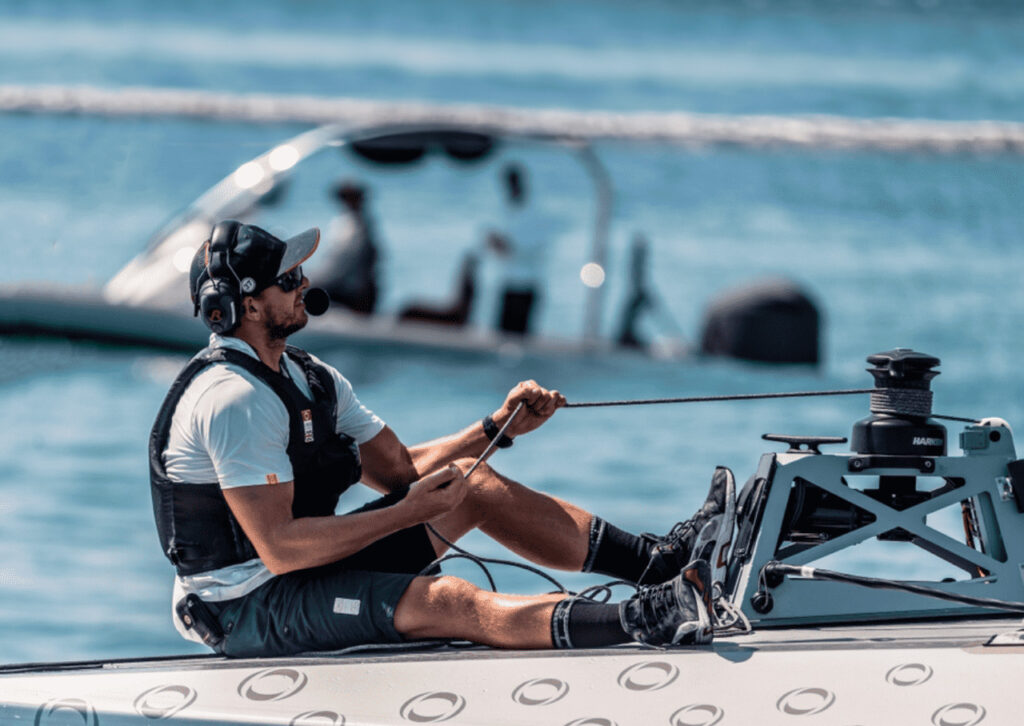Technical aspects regarding sailing lines onboard America’s Cup AC75 INEOS Britannia
Contents
It’s not every day that we have the opportunity to find out more about the details behind of America’s Cup racing, and in this case, we are learning technical aspects regarding sailing ropes onboard the AC75 INEOS Britannia.
INEOS Britannia is the British Challenger of Record representing Royal Yacht Squadron Ltd for the 37th America’s Cupin Barcelona.
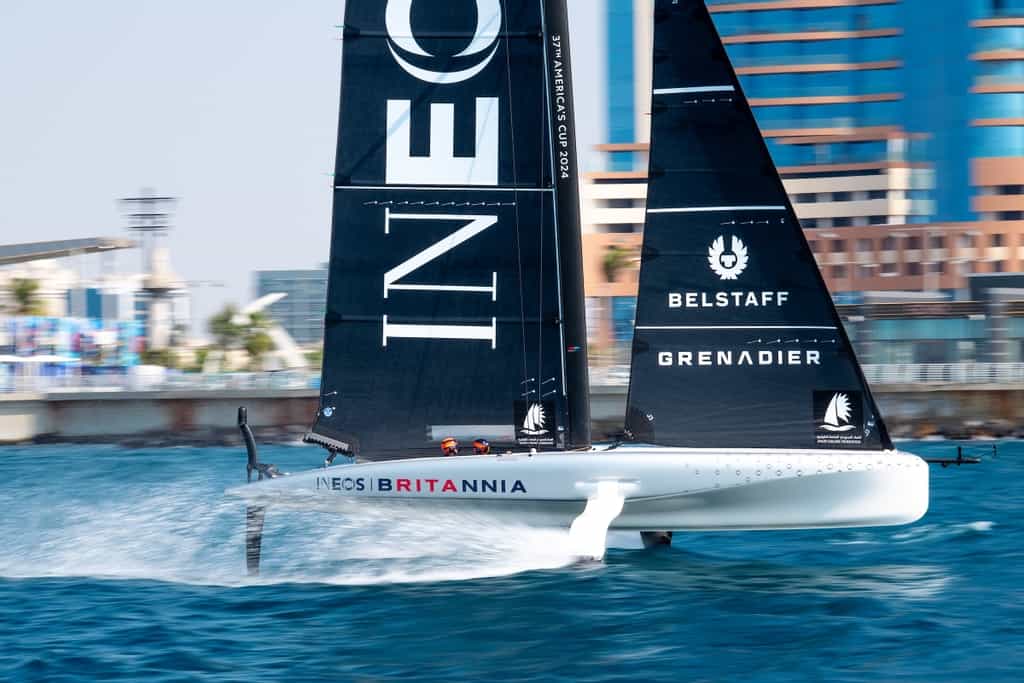
Bryce Ruthenberg, Head of Rigging at INEOS Britannia, has answered questions asked by Luigi Maffioli, Technical Director at Gottifredi Maffioli.
A topic that has been mentioned more than once during this interview is that they both agree that precision and performance intertwine in the pursuit of sailing excellence.
How important are the lines on board, when you're looking to bring home the Cup?
When it comes to winning the Cup, the lines onboard play a pivotal role. As a rigger, that’s where my expertise lies. Yachts design has evolved significantly, resulting in fewer lines onboard. However, the importance of accuracy, reliability, and durability of these components has only grown. Our primary goal is reliability – finishing the race is key to winning it! Once we’ve achieved this reliability, performance becomes our focus. So, selecting the right lines and rigging is crucial for success.
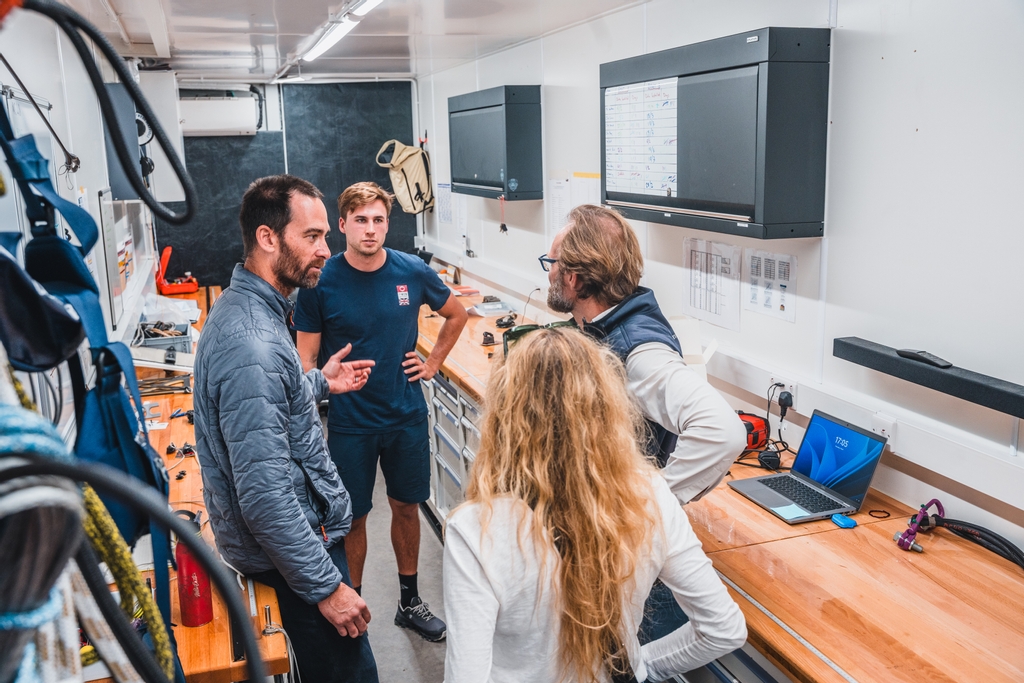
As a rigger working at this elite level of sailing, what aspects would you highlight regarding the collaboration with Gottifredi Maffioli?
Without the relationship, the product, and the in-depth knowledge of rigging products in general, but especially concerning the lines, achieving performance, reliability, and accuracy would be nearly impossible.
Quality comes at a price, no doubt. But in my perspective, we’re not just purchasing a line; we’re gaining access to exceptional service, knowledge, databases, and support through ongoing dialogue with Gottifredi Maffioli’s technical team, which holds unique expertise.
Compared to other line suppliers, Gottifredi Maffioli’s consistency and accuracy stand out, adding significant value to our experience. This emphasis on accuracy perfectly aligns with their company’s values, since ACCURACY is one of the foundational pillars alongside LIGHTNESS, PASSION, and RESPECT.
Talking about America’s Cup boats, accuracy is paramount at every level. It’s reassuring that we share this emphasis on accuracy because it’s fundamental to our success.
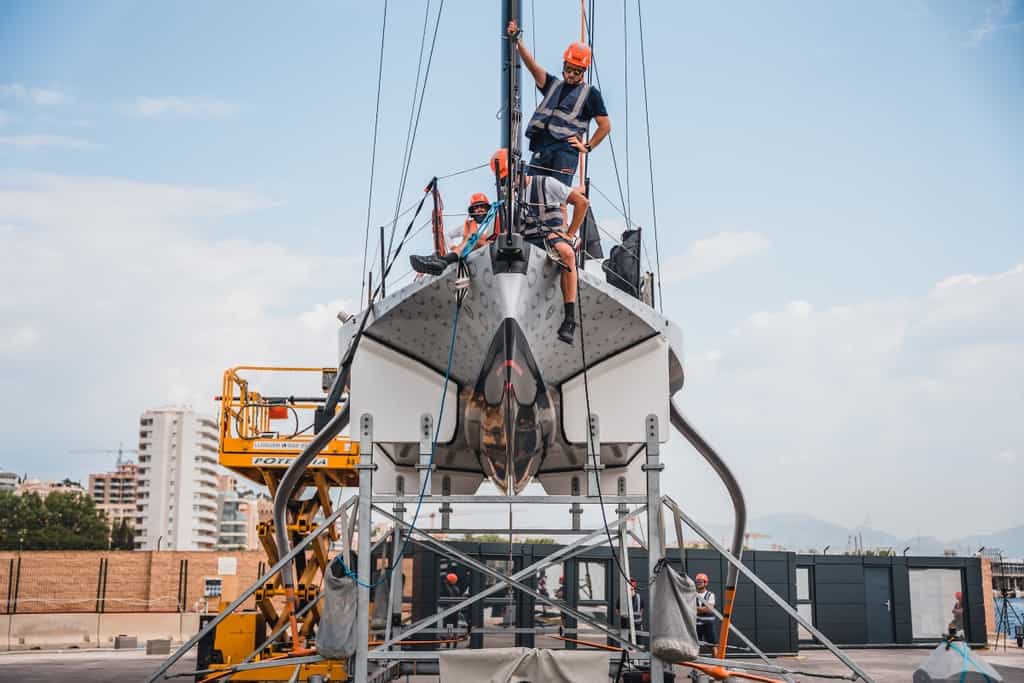
How do your daily rigging activities unfold? Do you start from scratch each day?
Well, in terms of our rigging work, we don’t overhaul everything on a daily basis. Typically, the most frequently replaced items are swapped out every 3 or 4 days. We’re all about accuracy these days, so we meticulously track and analyse data to maintain a comprehensive overview of the onboard equipment. This data is constantly updated and fed back to us, enabling us to identify items with varying lifecycles—some lasting 2,000 cycles while others endure for up to 20,000 cycles.
Everything is meticulously logged and recorded in our database, allowing us to replace components precisely when needed, to ensure the reliability required for competitive racing. So, to put it succinctly, the frequency of replacement varies: some items need changing every 2 to 3 days, while others, with less frequent cycling, may last 3 to 4 weeks before replacement.
Are rigging operations on a set schedule, or do they adapt to the sailing team's timetable? How is this managed?
Actually, it’s a bit of a challenge. Ideally, we’d love for rigging operations to align seamlessly with the overall schedule, but in reality, we have to sync up with the sailing team’s agenda, as well as factor in the unpredictable weather – after all, we’re all at the mercy of Mother Nature in this industry.
Weather conditions often dictate when we can hit the water. If there’s a window of opportunity, we seize it, even if it means working through the night, especially during the summer months. Sometimes, we get lucky, and the weather works in our favour; if there’s either too little or too much wind for sailing, it’s a maintenance day for the boat, giving us riggers a chance to catch up on any necessary tasks. It’s all about adapting and making the most of every opportunity we get.
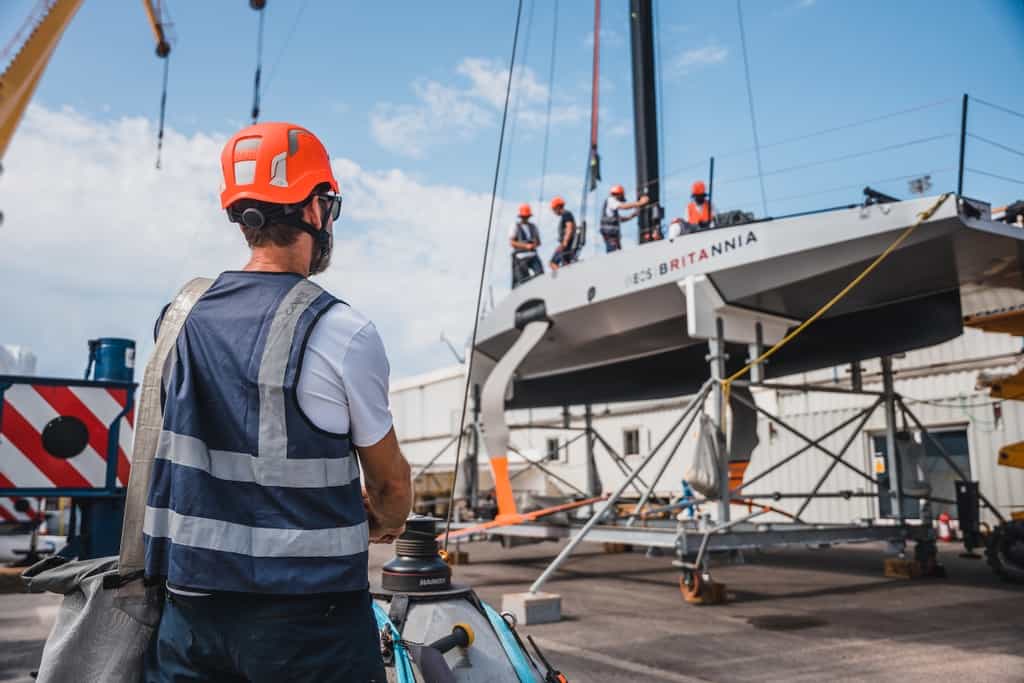
How many different Gottifredi Maffioli products do you have on board?
Well, that depends on how you define “product.” We primarily utilize a variety of Dyneema and some PBO products from Gottifredi Maffioli. While we don’t employ every combination from their catalogue, I’d estimate we have around 20 to 30 different products onboard.
Luigi adds: In this cup, we’re incorporating products that we didn’t initially associate with the America’s Cup project, such as the SK99 cores. Lifting straws and towing lines may not have been our first thoughts regarding the Cup, but they’ve proven crucial given the operations and boat lifting methods.
I agree – says Bryce – it’s a bit unexpected. Suddenly, our job list includes tasks requiring various lines and products, from lifting gear to towing equipment. It’s quite a shift from our usual focus on optimising performance. However, it’s a refreshing challenge and an integral part of the overall package.
We can actually categorise the use of ropes within the America’s Cup activities into rigging and lifting.
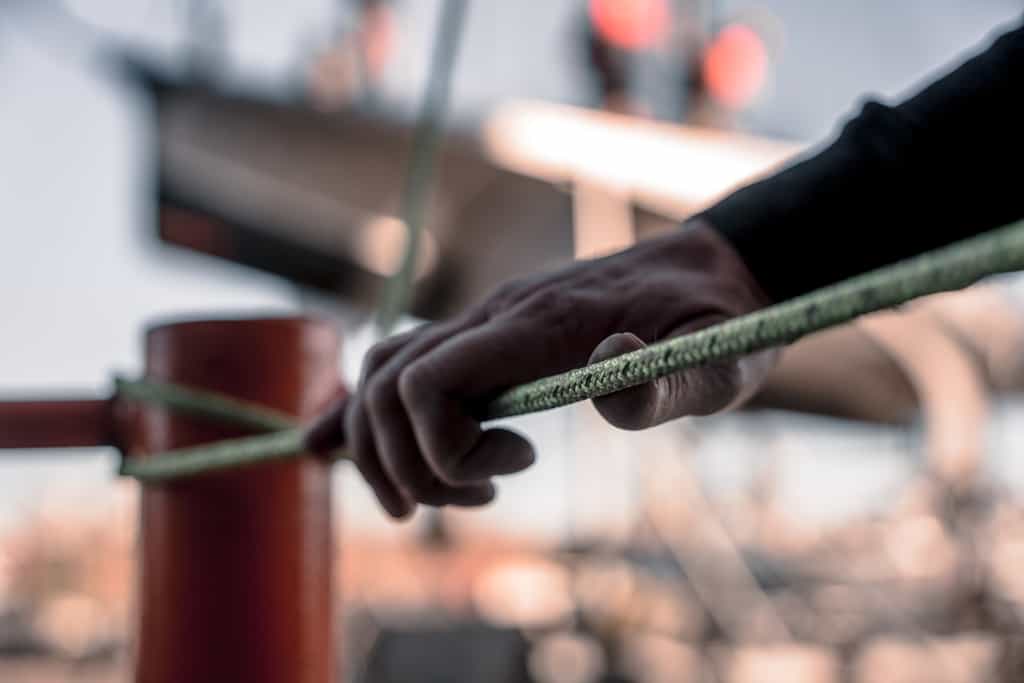
If we were to convert the amount of lines you use per month into kilometers, what figure would you estimate?
Well, let’s put it this way: a kilometer of rope may sound like a lot, but given that we’re not using winches anymore and the nature of sailing has evolved significantly, it’s actually a relatively small amount. Compared to previous America’s Cup events and other campaigns, the quantity of rope we use is quite modest.
We’re talking about hundreds of kilometers of lines per quarter, and tens of kilometers per month. However, while we may lack in kilometers, we compensate with increased demand on the rope due to more precise movements facilitated by solenoids, rams, and electronic sailing systems. So, even though the quantity may seem small, the intensity of use has increased significantly.
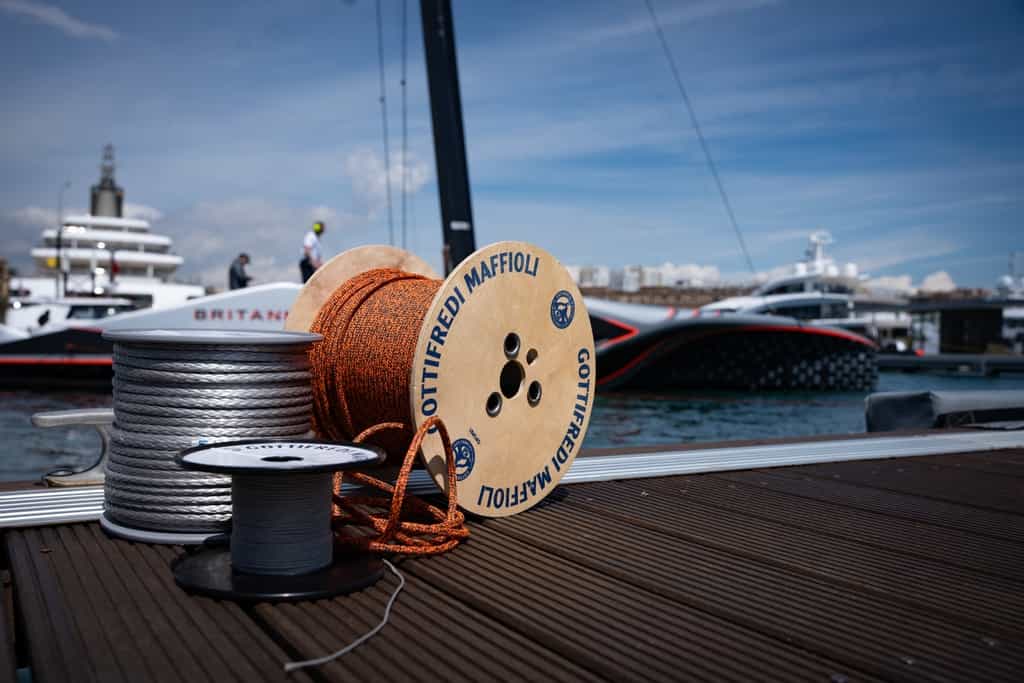
What role do sailing lines play onboard 2024 America’s Cup AC75’s?
Many people might not fully grasp the significance of ropes on boats like the AC75’s. While we may feel a hint of nostalgia for the days when boats were adorned with kilometers of lines, the evolution of technology has led us to explore intricate details that can make a substantial difference. Nowadays, it’s not just about the quantity of rope onboard, but rather the multitude of variations in small details, such as diameters and covers.
Interestingly, it’s true. It’s not just about the sheer amount of rope, but also the diversity of covers used for various applications. To the untrained eye, they may all appear the same, but there can be up to 20 different types, each tailored to specific requirements. This attention to detail is what sets apart manufacturers like Gottifredi Maffioli, who not only possess the expertise to produce these lines but also understand the nuances that riggers consider when selecting the right product.
Every strop, no matter how small, undergoes meticulous scrutiny to ensure optimal performance. Each one may have a different cover, code, or configuration, reflecting the demands of high-cycle sailing under intense tension. This level of precision is crucial for reliability, especially considering the relentless demands placed on both the equipment and the crew.
For me, it’s truly astounding to witness the constant demands placed on the boat and its crew. It’s not just about the ropes; it extends to every aspect of the vessel, including the electrical components. Achieving reliability in such a demanding environment is paramount, as downtime on the water can be detrimental. With boats now being virtually designed and launched, reliability has become more critical than ever. As Luigi mentioned, it’s the attention to detail that ultimately ensures performance on the water.

What tolerance do you consider acceptable in the length of a strop, and how strong are the rope pieces onboard INEOS Britannia?
When we talk about accuracy in ropes, it’s often a concept that eludes most people. It’s crucial to paint a picture of just how minute these details can be. The loads exerted on these lines are astonishingly high, considering the lightweight nature of these boats. It’s remarkable how something as small as a strop can withstand such immense forces.
Our goal with the mast and sail package is quite ambitious. We’re aiming for a setup without runners and 4-day control, which is no small feat. Essentially, we’re sailing in a foiling configuration, requiring meticulous attention to detail in sail adjustment. Controlling the boat’s movement while flying above the water surface demands precision in every aspect, including the main sheet and Cunningham systems.
The loads on our main sheet system are significant, given the overall weightlessness of the boat. Our main sheet, for instance, operates under intense pressure, yet it’s a remarkably streamlined system, with a diameter under 20 mm. It’s a testament to the strength and reliability of the materials we use.
To put things into perspective, the loads we’re dealing with are measured in tons, while the components holding these loads are incredibly lightweight and flexible. Achieving this delicate balance requires utmost precision in every aspect of our rigging.
In this campaign, accuracy is paramount. We meticulously craft each strop with a tolerance of just 1% over its length. This level of precision ensures consistency and reliability in our systems, even under the most demanding conditions.
The boats we’re working with are designed to the millimeter, thanks to cutting-edge design software and resources. Matching this level of accuracy in our rigging components is no easy task, but it’s where our partnership with Gottifredi Maffioli truly shines. Their ability to deliver consistently precise and reliable products has been instrumental in our success.
In essence, precision and accuracy are not just buzzwords for us; they’re the cornerstone of our operations. And it’s through this relentless pursuit of perfection that we continue to push the boundaries of performance in the America’s Cup.
However, the lines onboard are really hard to see… Where are the ropes on the boats?
If you’re scanning the horizon for lines dancing in the wind, you won’t find them; they’re all tucked away below deck and concealed behind sleek arrow foils. Most of our controls operate from beneath the deck, with lines cleverly hidden within the mast itself. In fact, for racing, we’ve even removed halyards from sight.
Gone are the days of sailors holding ropes by hand. While I might still have a touch of old-school sentimentality, the reality of this America’s Cup is far more high-tech. Sailors can spend an entire day at sea without ever laying hands on a rope. It’s almost like playing a sophisticated computer game: a simple push of a button triggers a flurry of activity, with lines communicating with various components to execute commands. While it may be hidden from public view, there’s a complex dance unfolding behind the scenes, driven by meticulous planning and precision.
You’ve mentioned the term “sailing cycles” a few times during our conversation. What does that expression mean?
Think of a cycle as a single movement or action performed by a sailing component. For example, let’s take the main traveler: if it’s eased once and then pulled on once, that counts as one cycle. In a typical day of sailing, that traveler might complete around 2,000 cycles back and forth. This puts a significant workload not only on the hydraulics system but also on the ropes themselves. Items like the main traveler may need replacement every three or four days to ensure optimal performance.
Just out of curiosity, how many spliced items are there onboard, roughly speaking, including connectors and various components?
On our race boat, we’re looking at roughly 50 spliced items onboard. While that might not seem much, it’s important to note that these spliced items are replaced frequently to maintain peak performance.
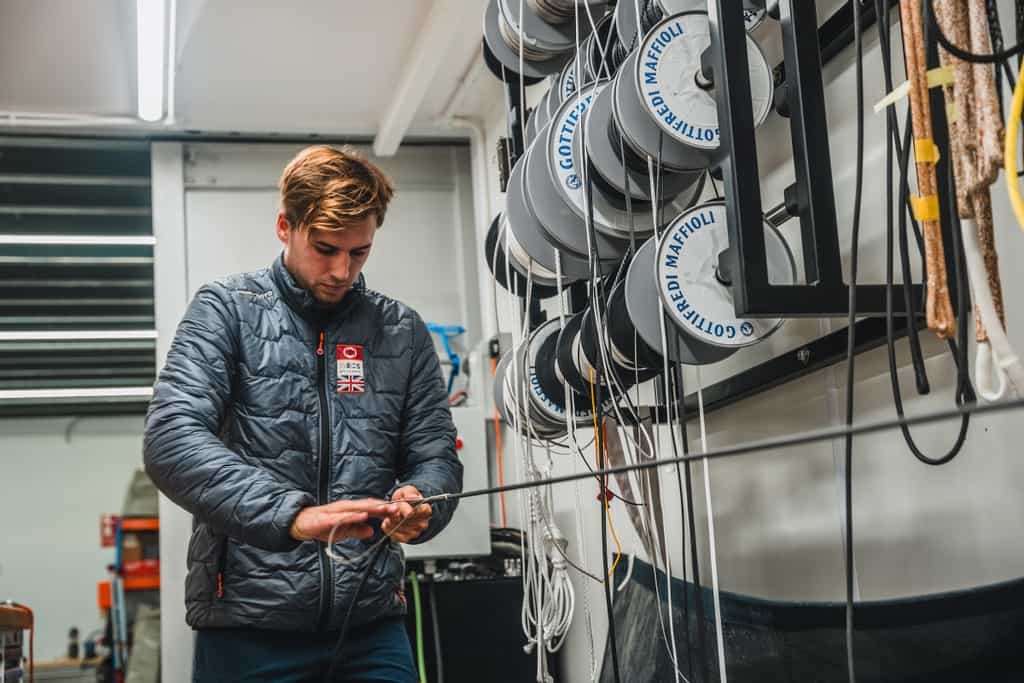
How many people are there in your rigging team?
There are four of us, including myself. One team member is out on the water every day, handling all the operations. We put the rig in and out every night and every morning. Additionally, our race boat has two riggers ready to go at all times. So, for the past two years, our team has been consistently busy, ensuring that there’s never a dull moment.
In the high-stakes world of the America’s Cup, where precision and performance are paramount, the collaboration between INEOS Britannia and Gottifredi Maffioli stands out as a shining example of excellence.
Through meticulous attention to detail and a commitment to accuracy, they have both forged a partnership that elevates the sport to new heights. On one side, the innovative use of cutting-edge ropes, on the other side the seamless integration of advanced technology. Every aspect of the rigging process reflects dedication to achieving optimal performance.
As the AC75s race across the water with unparalleled speed and agility, it’s clear that accuracy isn’t just a goal – it’s the cornerstone of success. In the relentless pursuit of victory, this collaboration continues to set the standard for excellence in the America’s Cup arena.

*Cover Photo Credits to L. Goldman


